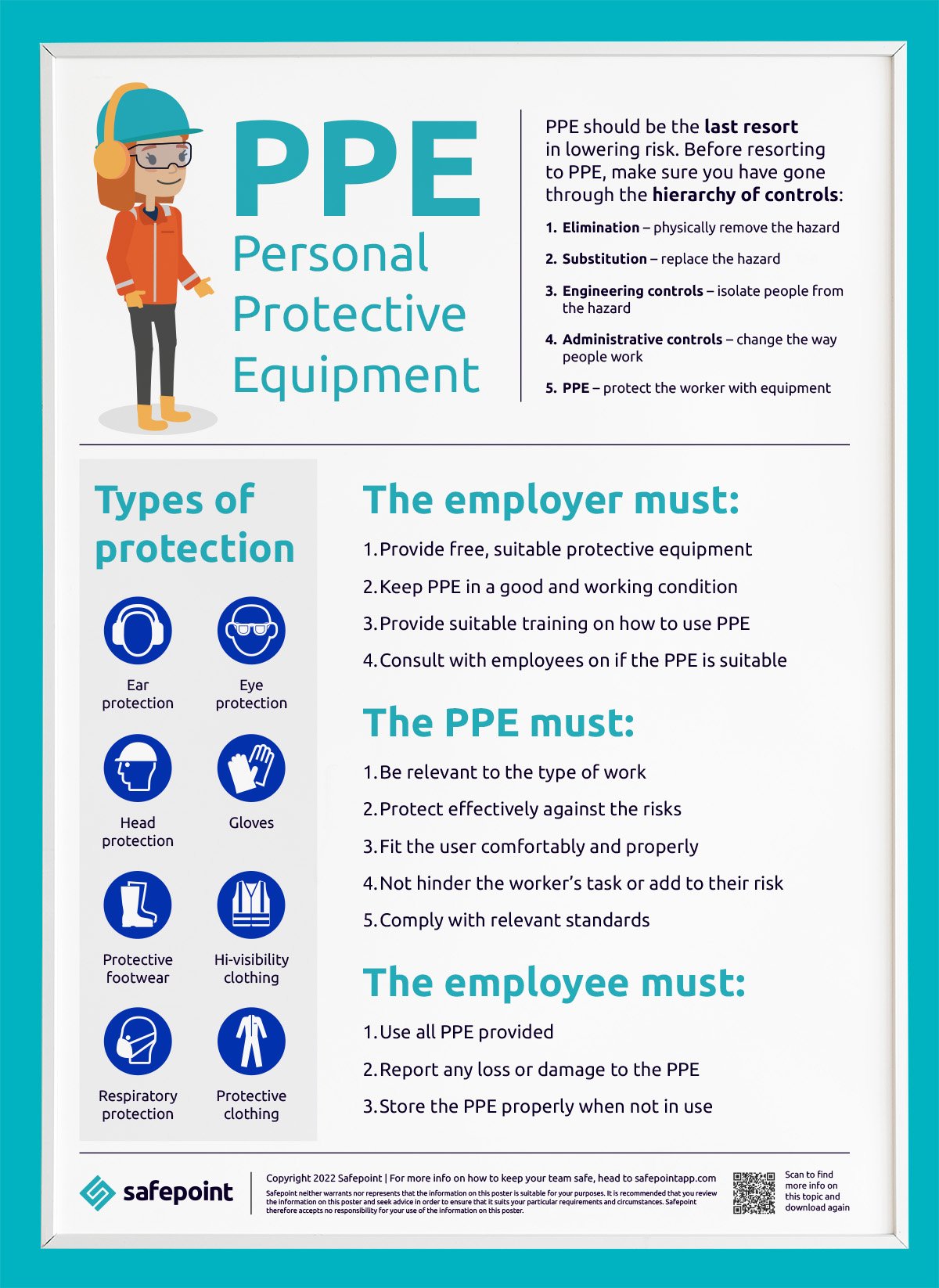PPE –An introduction to Personal Protective Equipment (Free Poster!)
What is PPE and why is it important?
PPE (Personal Protective Equipment) is equipment provided by an employer to help protect their staff from workplace hazards. Common examples include hard hats, hi-vis jackets, gloves, harnesses, safety footwear and respiratory protective equipment (RPE).
When to use PPE
PPE should be the last resort in lowering risk. Before resorting to PPE, employers should make sure they have gone through the entire hierarchy of controls:
Elimination – physically remove the hazard
Substitution – replace the hazard
Engineering controls – isolate people from the hazard
Administrative controls – change the way people work
PPE – protect the worker with equipment
Download your free PPE poster!
What responsibilities does an employer have to provide PPE?
An employer must:
Provide free, suitable protective equipment
Keep PPE in a good and working condition
Provide suitable training on how to use PPE
Consult with employees on if the PPE is suitable
What does PPE need to do?
PPE must:
Be relevant to the type of work
Protect effectively against the risks
Fit the user comfortably and properly
Not hinder the worker’s task or add to their risk
Comply with relevant standards
What responsibilities does an employee have around PPE?
An employee must:
Use all PPE provided
Report any loss or damage to the PPE
Store the PPE properly when not in use
Types of PPE Protection
Ear protection should be worn in areas with noise above 80 db, or anywhere where noise damage is a risk.
Eye protection may be needed for a variety of reason –E.g, when working with chemicals, sparks, or radiation.
Head protection such as a hard hat or other helmet should be used when there is a risk of head injury.
Gloves may be needed for a variety of reasons, such as when handling heat, sharp objects, or chemicals.
Protective footwear such as ‘steel toe cap boots’ can provide protection against impacts and slipping.
Hi-visibility clothing is not just for those who work outside, but wherever there is a risk from not being seen.
Respiratory protection helps protect against dust, fumes, vapours and other airborne hazards.
Protective clothing may protect the skin from cold, heat, chemicals and more.
Download your FREE PPE poster!











